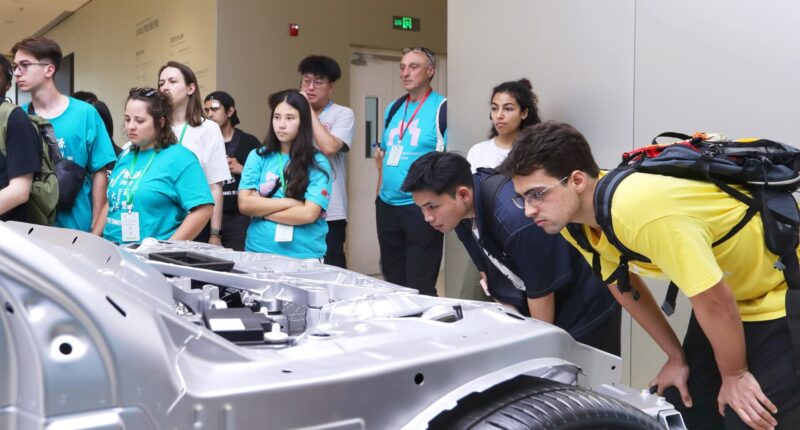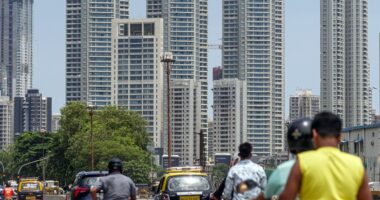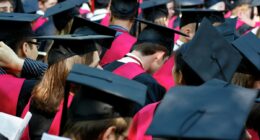Share this @internewscast.com
This report is from this week’s CNBC’s The China Connection newsletter, which brings you insights and analysis on what’s driving the world’s second-largest economy. You can subscribe here.
The big story
Immigration anxieties and a challenging job market have sparked an online backlash over China’s latest attempt at attracting global talent — a new visa program announced in August.
The program, which was rolled out on Wednesday with the aim of attracting foreign professionals, will also test how China balances its immigration policy with its pursuit of technological ambitions.
Under the new rules, young graduates — in the fields of science, technology, engineering and mathematics or STEM — no longer need backing from a local employer and can enjoy more flexibility in terms for entry frequency and duration of stay.
The keyword “K-visa” — as China’s new visa category is called — was among the top searches on social media site Weibo for days, before chatter about National Day traffic jams pushed it off the charts as millions hit the road for a week-long holiday.
BEIJING, CHINA – JUNE 30: Foreign students view Modena platform while visiting Xiaomi Auto Super Factory on June 30, 2025 in Beijing, China.
Wang Ziru | China News Service | Getty Images
Chinese social media users argue that the new visa tilts the playing field toward foreign graduates at the expense of those educated in China. Others on Weibo warned that without employer sponsorship, the program could invite fraudulent applications and open the door to a surge in arrivals from developing countries, piling pressure on an already strained labor market.
“It’s already hard enough to verify local degrees. Now the K-visa would quickly spawn a cottage industry of agencies helping foreigners secure entry,” one user, with the handle name “momo has a new life,” wrote on the platform.
The backlash has prompted an unusually sharp response from state media, that has dismissed the criticism as “misleading” and “narrow-minded.” An editorial in People’s Daily argued that China still lacks in high-level talent needed to sharpen its technological edge, brushing aside fears of excessive immigration.
Hu Xijin, the outspoken former chief editor of nationalist tabloid Global Times, called the public backlash “a messaging problem,” adding that expatriates account for just 0.1% to 0.2% of China’s population, compared with 15% in the U.S.
Beijing’s focus on courting foreign talent is in stark contrast to Washington that recently introduced visa restrictions, making it difficult for overseas professionals to work in the U.S. China lags behind the U.S. in some key fields such as semiconductors and biotechnology and has been eager to draw foreign talent to help it catch up.
It will be “a test” for Beijing to manage the program amid strong public opposition, said Dan Wang, China director at geopolitical risk advisory Eurasia Group, expecting China to keep K-visa issuance “tightly controlled in small numbers and strict criteria so it looks like targeted recruitment rather than mass immigration.”
The debate comes at a time when China’s job market has been deteriorating, with the urban unemployment rate in August rising to its highest level since February.
Adding to a mismatch between an abundant supply of educated workers and a shortage of white-collar openings is an avalanche of 12.2 million college graduates — a record high — entering the job market this year.
The official youth unemployment rate spiked in August to 18.9%, the highest number since the new system of record-keeping took effect in 2023, excluding students.
Still, fears of expatriates flooding local job market appear to be overblown as the new policy, led by state-backed capital, will target the “top-tech talents” with limited impact on the broader job market, said Bob Chen, economist at Shanghai-based FG Venture with investments in advanced technology, semiconductors and AI segments.
Calculated move
While Beijing has not released specific details on who will be eligible for the program or whether they will be allowed to take up formal employment in the country, the gesture alone signals that China is becoming more open to the world.
Meanwhile, the U.S. appears to be closing itself off as President Donald Trump imposed a $100,000 fee for H-1B visa applicants, making it more expensive for American companies to bring in skilled foreign workers.
Sectors tied to strategic rivalry with the U.S. — from semiconductors and clean energy to advanced manufacturing, AI and biotech — will likely see most traction under China’s new visa as it strives build its advanced tech ecosystem.
“Winning more American engineers is key, it is a chance for Beijing to showcase the superiority of its system,” said Eurasia’s Wang, adding that while India has a large pool of engineers, political and cultural sensitivities could limit approvals.
A biotech veteran who spent nearly 20 years at global pharmaceutical firms and now runs a research center in Shanghai acknowledged that the K-visa could draw more Chinese Americans to China, who have faced a “bamboo ceiling” that still limits career advancement in U.S. companies. The person wished to remain anonymous due to privacy concerns.
Despite signaling a greater openness to global talent, the policy does not represent a sweeping liberalization of China’s immigration approach. China has historically maintained strict immigration policies, tightly restricting low-skilled workers with limited paths to permanent residency for foreigners.
China wants to use K-visa to bring in more talent, but the ultimate goal is still to rely on China’s own capacity to build future tech, said George Chan, a partner at Washington-based consultancy The Asia Group and former Asia policy director at Meta.
“Make no mistake: this is a highly calculated move by China, not an open invitation,” said Alfredo Montufar Helu, managing director at advisory GreenPoint in Beijing. “The goal isn’t mass recruitment [but] the strategic acquisition of exceptional individuals who can sharpen China’s competitive edge.”
Top TV picks on CNBC

Daniel Kritenbrink, partner at Asia Group and former U.S. assistant secretary of state for East Asian and Pacific Affairs, said the U.S. and China may not reach a broader trade deal like the ones that the White House has with other trading partners.

Leland Miller, China Beige Book CEO, joined “Squawk Box” to discuss the state of China’s economy, U.S.-China trade talks, the future of Taiwan independence and more.

U.S. interior secretary Doug Burgum joined “Power Lunch” to discuss President Donald Trump’s coal leasing plan, U.S. energy security and the AI race with China.
Need to know
DeepSeek launched V3.2-Exp model. The latest model, an experimental version of its current model DeepSeek-V3.1-Terminus, is expected to increase efficiency and improve AI’s ability to handle a lot of information at a fraction of the cost.
China’s industrial profits soared. The improved profitability came as Beijing intensified efforts to rein in excess supply and aggressive price wars that had hurt companies’ bottom line. Economists believe that a restructuring of China’s over-capacity issue is already in motion and will likely be a lasting theme in the 15th five-year plan.
Manufacturing activity improved in September. China’s official gauge for manufacturing activity showed a smaller-than-expected contraction in September as Beijing intensified its efforts aimed at curbing industrial overcapacity amid sluggish domestic demand and global trade disruptions.
Quote of the week
China equity market, over the last several years, they have gone through very significant composition shift … we need the macro to catch up, and we need to see that inflection turnaround point for the broad earnings to happen sometime in the next year.
— Laura Wang, chief China equity strategist at Morgan Stanley
In the markets
China’s stock market was closed for a holiday, while its 10-year government bond yields were trading nearly 2 basis points higher at 1.878%.
Coming up
Oct. 1-8: Mainland China markets closed for China’s National Day holiday









